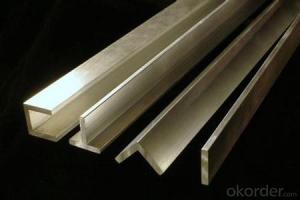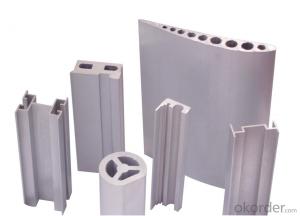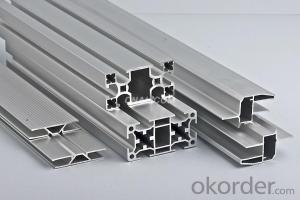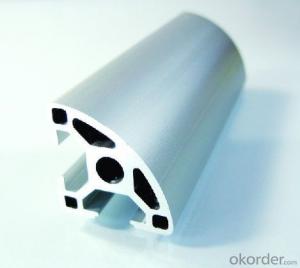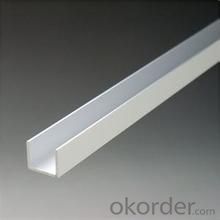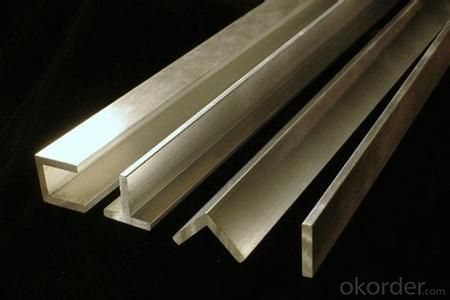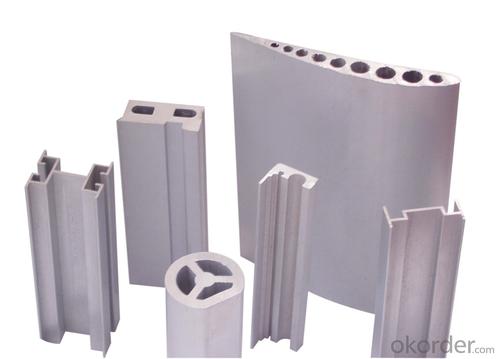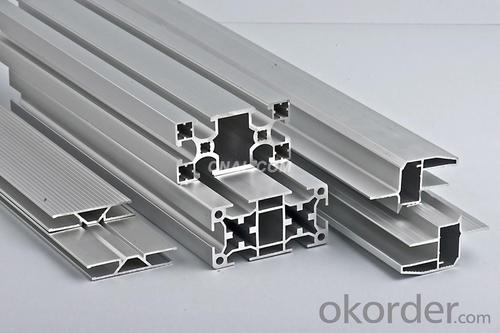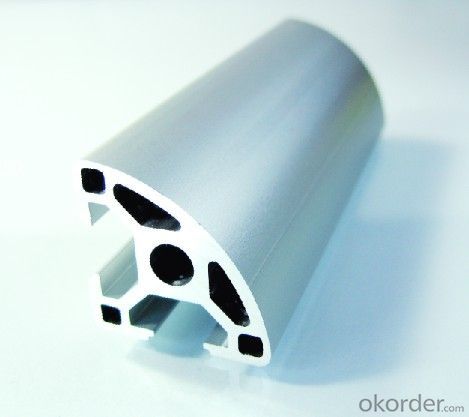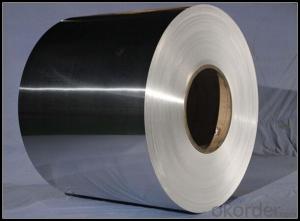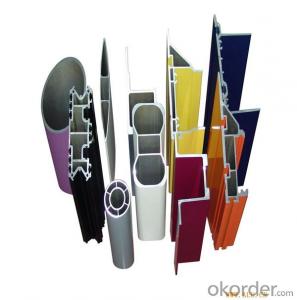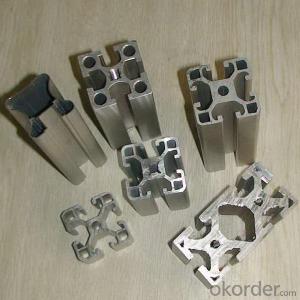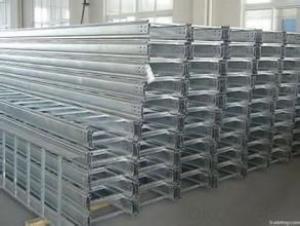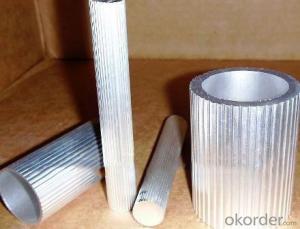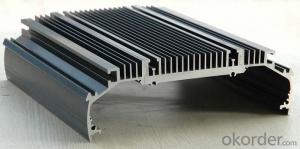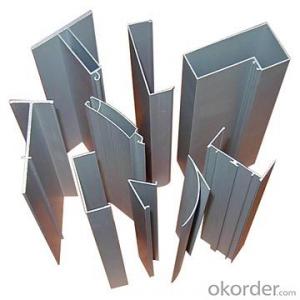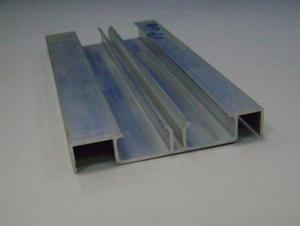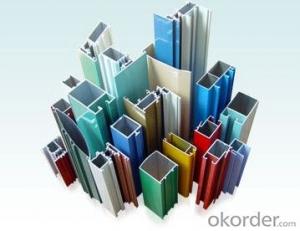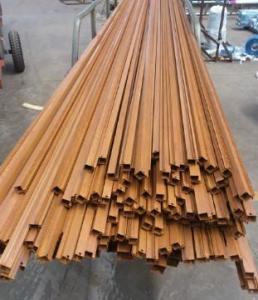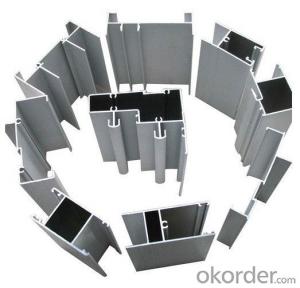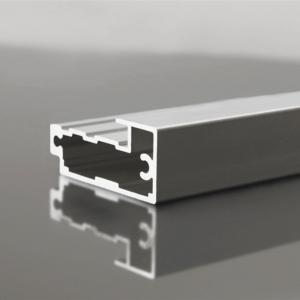Aluminum Extrusion Profiles from China - Various Surface Treatment Industrial Aluminium Profile Extrusion
OKorder Service Pledge
OKorder Financial Service
You Might Also Like
Aluminium is a relatively soft, durable, lightweight, ductileand malleablemetalwith appearance ranging from silvery to dull gray, depending on the surfaceroughness. It is nonmagnetic and does not easily ignite. A fresh film ofaluminium serves as a good reflector (approximately 92%) of visible lightand an excellent reflector (as much as 98%) of medium and far infraredradiation. The yield strength of pure aluminium is 7–11 MPa,while aluminium alloys have yield strengths ranging from200 MPa to 600 MPa. Aluminium has about one-third the densityand stiffness of steel. It is easily machined,cast, drawn and extruded.
Features:
Material | Alloy 6063,6061,6005or according to customer’s choice |
Temper | T3, T4, T5, T6 |
Surface | Anodize, electrophoresis, powder coating, PVDF coating, wood grain painting, matted, etc. |
Length | Coating 6.5 meters, Anodizing 6.5 meters, Mill finish 5 meters |
Application | Industrial, electrical equipment(TV set, air conditioner, refrigerator, computer), decoration,construction, transportation |
Custom Made | We can package following with customer's request. |
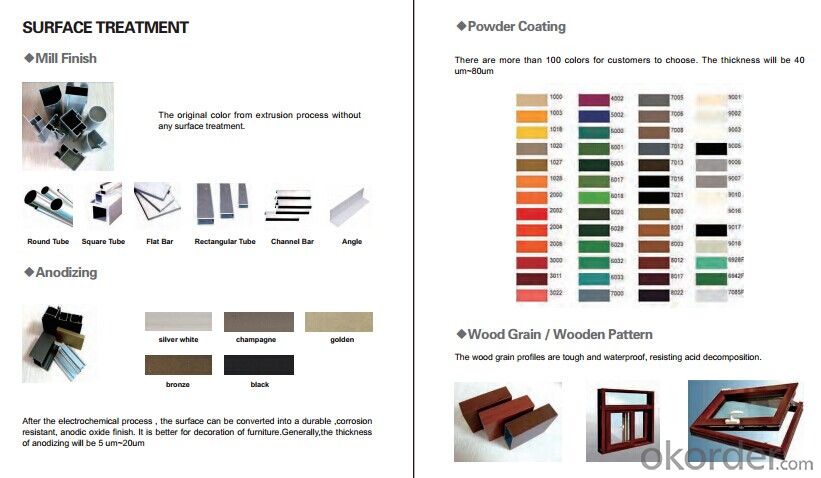
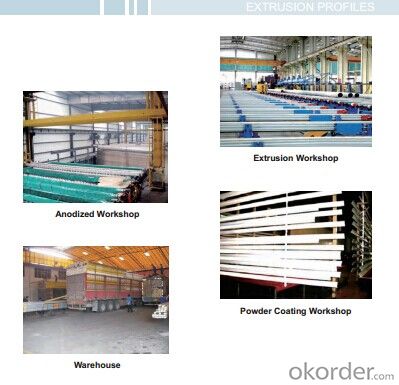

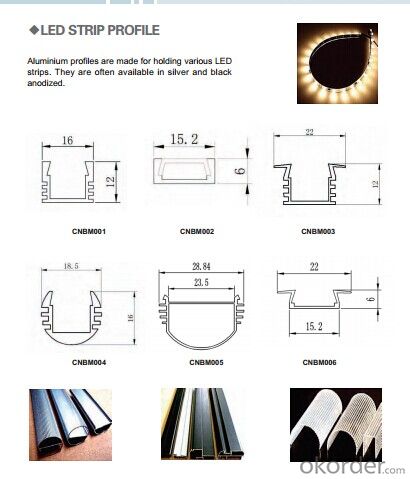
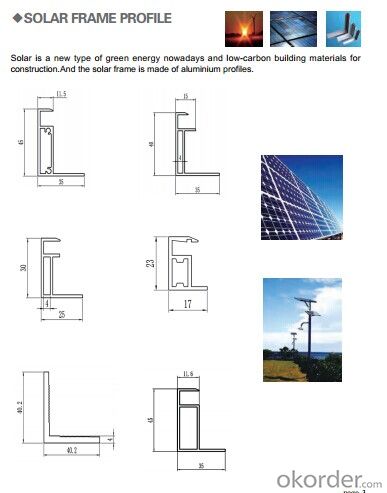

- Q: What are the impact resistance properties of aluminum profiles?
- Aluminum profiles have excellent impact resistance properties due to their inherent strength and durability. They can withstand high impact forces without deforming or breaking, making them suitable for various applications where impact resistance is crucial, such as automotive, construction, and aerospace industries. Additionally, aluminum profiles can absorb and distribute impact energy effectively, minimizing the risk of damage or injury.
- Q: What are the dimensions and sizes of aluminum profiles?
- The dimensions and sizes of aluminum profiles can vary greatly depending on their intended use and design. They can range from small and narrow profiles, such as 10mm x 10mm square tubes, to larger and wider profiles, such as 100mm x 100mm square tubes. Additionally, aluminum profiles can come in various shapes, including square, rectangular, round, and custom shapes, to accommodate different applications and structural requirements. It is important to consult specific product catalogs or manufacturers for precise dimensions and sizes of aluminum profiles.
- Q: What are the noise reduction properties of aluminum profiles?
- Aluminum profiles possess excellent noise reduction properties due to their inherent characteristics. The high density and rigidity of aluminum make it an effective material for reducing noise transmission. When used in structural applications, aluminum profiles can dampen and absorb sound waves, limiting their propagation and reducing noise levels. The versatility of aluminum profiles allows for the incorporation of additional noise-reducing features. For instance, aluminum profiles can be combined with insulating materials, such as foam or rubber, to further enhance their noise reduction properties. This combination creates a barrier that absorbs sound waves, preventing them from passing through and minimizing noise transmission. Moreover, aluminum profiles can be designed with intricate shapes and structures, which aid in reducing noise. By utilizing innovative designs, such as ribbing or perforations, the profiles can disrupt sound waves and scatter them, effectively reducing noise levels. Furthermore, aluminum profiles can be anodized or coated with sound-absorbing materials, which enhances their noise reduction capabilities. These surface treatments can help to absorb and dissipate sound energy, reducing noise resonance and improving overall acoustic performance. In summary, aluminum profiles possess excellent noise reduction properties due to their density, rigidity, and versatility. When combined with insulating materials, innovative designs, and surface treatments, aluminum profiles can effectively reduce noise transmission, making them a suitable choice for applications where noise control is crucial.
- Q: What are the bending radii for different aluminum profiles?
- The bending radii of various aluminum profiles can differ based on the profile's specific shape and thickness. Generally, aluminum profiles can be bent to a minimum radius, usually around 1.5 to 2 times the material's thickness. For instance, if you possess an aluminum profile with a thickness of 1mm, the minimum bending radius would be approximately 1.5 to 2mm. Similarly, if the profile's thickness is 3mm, the minimum bending radius would be about 4.5 to 6mm. It's important to note that these values are approximate and can vary depending on the particular alloy and temper of the aluminum. Moreover, the bending process itself, including the equipment and method employed, can also impact the achievable bending radii. To ensure precise bending, it is advisable to seek guidance from the manufacturer or a professional fabricator who can provide specific instructions and recommendations for bending radii based on the specific aluminum profile you are working with.
- Q: What specific criteria or standards must be met when employing aluminum profiles in commercial construction?
- <p>Yes, there are special requirements for using aluminum profiles in commercial buildings. These include adherence to building codes and regulations, which vary by region. Profiles must meet specific strength and durability standards to ensure structural integrity. They should also comply with fire safety and energy efficiency requirements. Additionally, the profiles need to be resistant to corrosion and weathering, and must be compatible with other building materials. Aesthetic considerations, such as color and finish, are also important to match the building's design. It's crucial to work with certified suppliers and follow proper installation procedures to meet these requirements.</p>
- Q: This question asks about the various materials used to coat aluminum profiles for improving their appearance.
- <p>There are several types of coating materials used on aluminum profiles for aesthetic purposes, including: 1. Powder coating, which offers a durable and colorful finish. 2. Anodizing, a process that enhances the surface hardness and provides a decorative effect. 3. Electrophoretic coating, known for its smooth and even finish. 4. PVDF (Polyvinylidene Fluoride) coating, which is weather-resistant and offers a wide color palette. 5. Thermal spraying, which can provide a decorative or protective layer. 6. Sol-gel coating, a newer technology that offers excellent adhesion and corrosion resistance. These coatings not only enhance the visual appeal but also protect the aluminum from environmental factors and wear.</p>
- Q: How do aluminum profiles resist corrosion?
- Aluminum profiles have a natural resistance to corrosion due to the formation of a protective oxide layer on their surface. When exposed to oxygen in the air, aluminum reacts and forms a thin layer of aluminum oxide. This oxide layer acts as a barrier, preventing further oxidation and corrosion of the metal underneath. The oxide layer is tightly bonded to the aluminum surface, making it extremely durable and resistant to environmental elements such as moisture, chemicals, and UV radiation. Additionally, aluminum profiles can be further enhanced with various surface treatments such as anodizing or powder coating, which provide an additional layer of protection against corrosion. These treatments not only enhance the aesthetic appeal of the profiles but also improve their resistance to corrosion, making them suitable for a wide range of applications in various industries. Overall, the natural oxide layer and the ability to apply additional protective coatings make aluminum profiles highly resistant to corrosion, ensuring their longevity and durability in different environments.
- Q: What unique considerations or specifications are needed when utilizing aluminum profiles in cold weather conditions?
- <p>In cold climates, special requirements for using aluminum profiles include selecting materials with enhanced thermal performance to prevent condensation and frost. It's crucial to use aluminum profiles with appropriate thermal breaks to reduce heat loss. Additionally, consider using profiles with higher strength to withstand the contraction and expansion caused by temperature fluctuations. Protective coatings or finishes may be necessary to prevent corrosion from salt or other winter chemicals. Always consult with manufacturers for specific recommendations tailored to the climate conditions.</p>
- Q: Can aluminum profiles be painted or coated?
- Yes, aluminum profiles can be painted or coated.
- Q: Where is the aluminum profile market in Nanjing? Specific address, bus route
- There seems to be an aluminum profile market over the West Bridge
Send your message to us
Aluminum Extrusion Profiles from China - Various Surface Treatment Industrial Aluminium Profile Extrusion
OKorder Service Pledge
OKorder Financial Service
Similar products
Hot products
Hot Searches
Related keywords

